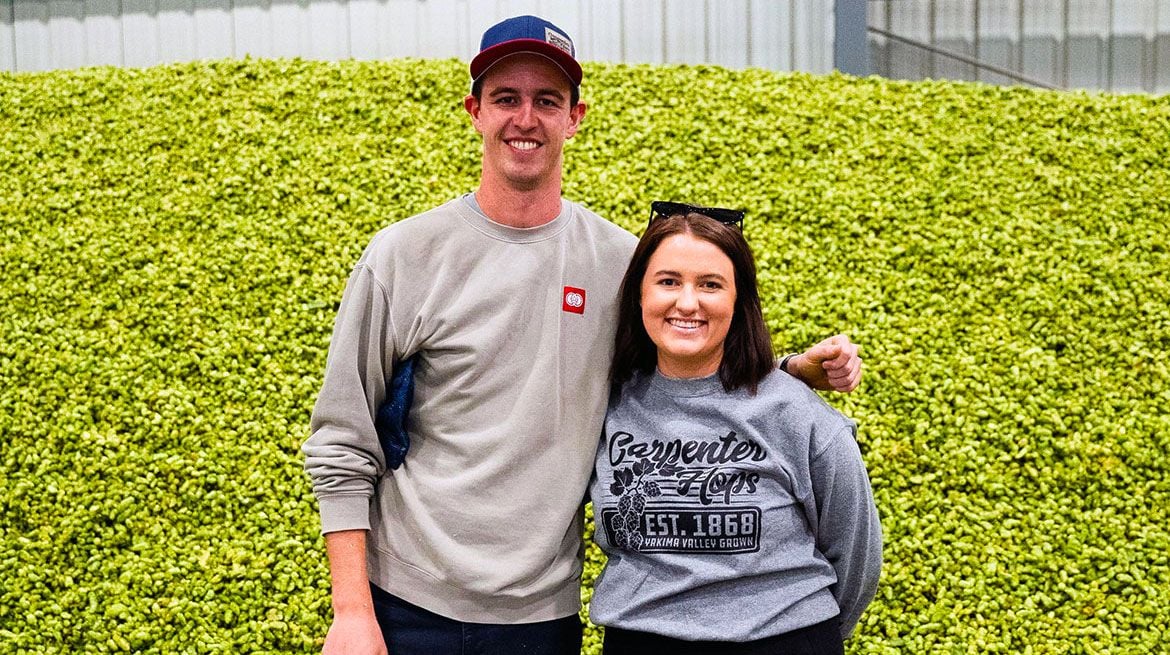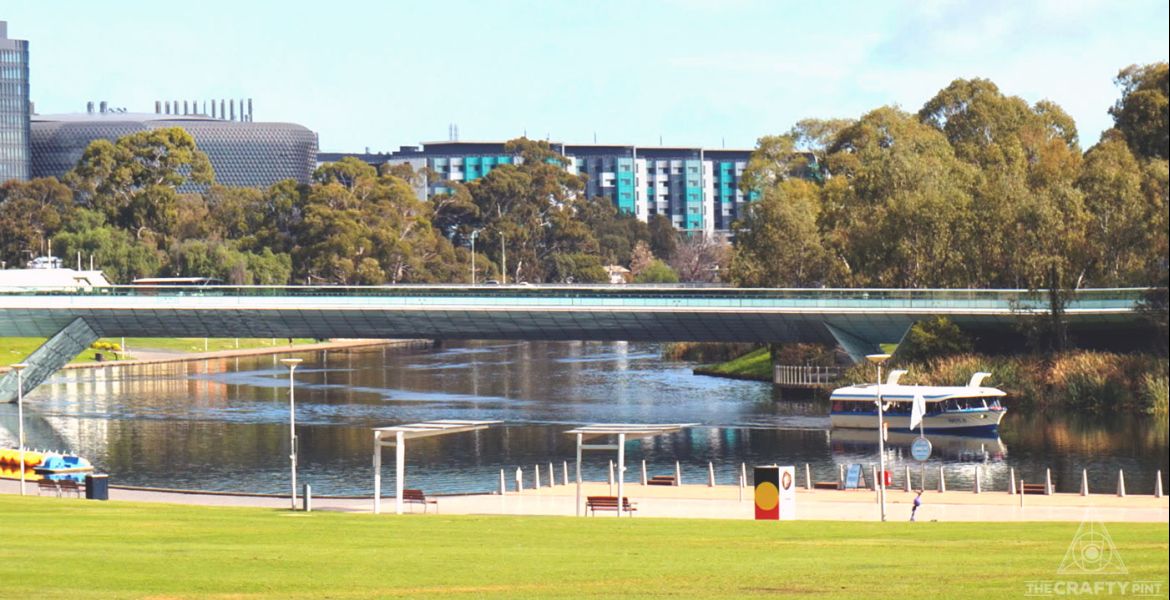At the start of real autumn (March), breweries from around the world make their way to Australia and New Zealand to walk through the local hop fields to gain an understanding of where and how varieties like Galaxy, Eclipse and Nelson Sauvin are grown.
A similar thing occurs during fake autumn (September), when brewers from the Antipodes make their way north to catch a glimpse of the harvest in America’s Pacific Northwest. There, across Washington, Oregon and Idaho growers are responsible for producing the vast majority of hops varieties such as Mosaic, Simcoe, Centennial and Citra (to name just a few).
This year, Yakima Chief Hops (YCH) – which is connected with Cryer Malt in Australia – took guests from Fox Friday, Mountain Culture, Range, Banks, Gage Roads, Balter and Garage Project across the Pacific. They were there not only to check out where such hops come from but also to pick their own varieties for next year.
YCH’s Australian manager James Monshing says hop selection involves rubbing, smelling and picking single varieties that were grown on different farms and on different lots. It's an enviable work trip available to those who buy a certain amount from them – and anyone who knows the beers of the brewers on this trip will be well aware they use a lot of hops.
“They can select a single lot to lock in for the next 12 months in a yearly contract,” James says.
Such tours give the supplier a chance to build relationships between hop growers and farmers. For brewers, they're above to choose a pretty consistent supply of hops, given the crops can vary across YCH's network of farms spread over the three major growing regions.
“Citra in Idaho is not necessarily the same as Citra in Washington,” James says, pointing out how breweries tend to pick those same farms whenever they're doing selection.
“It's all blind but when we have blind lots in front of them, we often find that they go back to what they’ve smelt before, what they want in their beer, and usually it will come from the same region.”

When it comes to what they’re looking for, it’s not necessarily the hops brewers consider the "best" they end up securing.
“We often see that a brewer might be super interested in a certain hop and have it rated as a nine or ten out of ten,” James says. “But they’ll pick their eight because it lines up with the profile of the other hops they’re selecting and what they want in their beer.”
That said, sometimes it’s a case of finding the most unique flavour profiles; with breweries from around the world descending on Yakima at this time of year, beauty is often in the eye of the hop holder.
“If one brewer doesn’t like it, another one is going to,” James says. “We have some brewers who don't necessarily run a core range and are super open to new and interesting varieties and quite different kinds of Simcoe, Mosaic or Citra.”
Given America's hop harvest has just finished and Australia is a long way from Yakima, the beers featuring this year's US crop won't be available until around March year. But we figured it was a fine time to chat to a couple of recently-returned brewers to find out more about the experience.
Matt McIver – Range's co-founder who was in Yakima for his third harvest – the second on which he's been there to select hops. He was there as the brewery was preparing to triple the size of their core range with the addition of Sunshine XPA and Dreams Hazy IPA.
Chris Farmer – Banks Brewing’s co-founder headed over for his first hop selection, pictured on the right of the photo at the top of the article with Range head brewer Mitch Pickford.

Why did you want to go?
Matt: The ability to be able to select what you’re putting into each and every one of your beers is crucial for consistency, especially when we’re talking about the Forever Range.
In terms of what we’re looking for, it’s normally pretty clear what we want between one hop and another; both might be good but there are certain things we prefer in some varieties.
Chris: For us, it’s that that we get to dial in what we’re looking for. Freestyle Hops send over packets of their Nelson Sauvin for us to pick from, and we just saw some of the difference that we were getting. We’ve loved doing that so, if we can get a similar result from US hops that we use more of, then it sounds like a no-brainer to us.
We selected Citra, Citra Cryo, Mosaic, Simcoe and Centennial and timed it so they were the varieties that would be ready by the time we arrived.
In terms of what we’re looking for, it’s so different across them. The variance of Citra was insane – and that’s a hop we use a tonne of. We're looking for as much fruit as possible, with as much passionfruit and tropical character as we can get. We went for really berry characteristics in Mosaic, whereas with Centennial we’re looking for a bit more dankness behind it.

What was it like being in America during hop harvest?
Matt: You’re just randomly running into people you know the whole time. We try to check in when our mates from other countries are around during harvest, though.
There’s quite an exciting vibe in the air about what’s really good this year; everyone was talking about how good the Citra and Simcoe were, and when they came out onto our table, they were really good.
Chris: It’s a small town and there’s breweries from everywhere, so you’re just walking across town and seeing merch everywhere.
The people there were incredible: the farmers and growers were just so generous with their time and they care so much about the product and the industry. They’re a huge company but just the fact they care about little old us matters so much.

What were the highlights your visit?
Matt: We went to Yakima Chief Ranches where the breeding program is for YCH. That was super interesting; we don’t often think about going that far back – we often just see the fields, but here we got to see the labs and the greenhouses where everything is figured out.
Chris: Everything is so high-tech and automated and just the scale alone is crazy. We did a tour of the Cryo plant too, which was amazing to see what goes into it; there was so much force or pressure going on in the plant that the entire platform we were on was just shaking.
Also, everywhere you go there's beer on tap.

Any other takeaways from the trip?
Matt: It’s just such a huge and high-tech operation with so many people involved. It really makes you appreciate how much those hops cost and why we have to charge what we do for double IPAs. I kind of wish everyone really into beer could go and see it so they can understand that.
We also did a collab with Fast Fashion in Seattle, and we brewed at Green Cheek, which was awesome. Fast Fashion are really small and do a really broad range of beers but are particularly known for hazies and don't really recycle recipes, while Green Cheek are really well known for all things IPA. But specifically I'd say their West Coast IPAs, Cali IPAs and lagers are insane – as too are their hazy IPAs which is what we brewed with them.
Chris: It’s renewed my love for hops again, which is weird to say for a brewery that makes hoppy beers. But I was drinking these really good West Coast IPAs that we would probably call Cali IPAs, and the beers that really stood out to me were just these really clean expressions of hops.
We also tried YCH’s new flowable [liquid] YCH702, which a few people here have used but we haven’t. I smelt that and straightaway went: “Woah!”, so I asked James if we could get some for a collab we did with Range. He brought back two litres in his suitcase and that beer is tasting phenomenal.
It’s predominantly a hot side product but we used it cold side in this beer like a dry hop after we spoke to a few people over there and they said they’d done it all different ways and this was a cool way to do it with some good results.


















